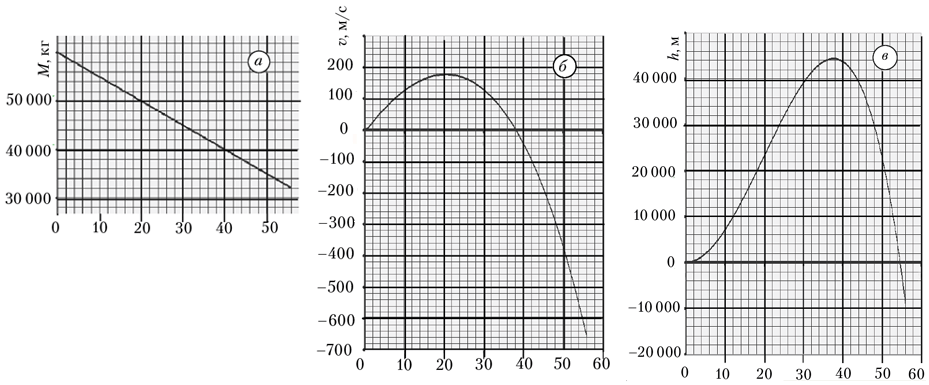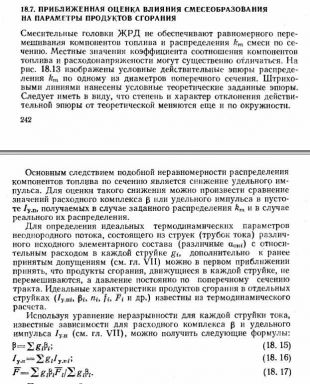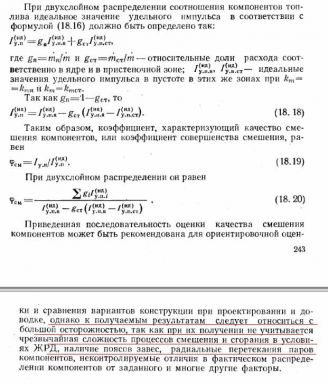 Реклама Google — средство выживания форумов :)
Реклама Google — средство выживания форумов :)
-
![[image]](https://www.balancer.ru/cache/sites/ru/sa/savepic/128x128-crop/6561348.png)
Идиот-клуб [8]
Теги:
>>Точность таких моделей не позволит вытащить те 8%
vsvor> Конечно, точность воображения аФона выше, чем у каких-то там численных расчетов. аФон, пора определиться: все-таки 7, 8 или 10%? Или, скажем, 5 плюс-минус 15?
УИ упал на 7-10%
Это приводит к падению лунной ПН на 10-14%
vsvor> Конечно, точность воображения аФона выше, чем у каких-то там численных расчетов. аФон, пора определиться: все-таки 7, 8 или 10%? Или, скажем, 5 плюс-минус 15?
УИ упал на 7-10%
Это приводит к падению лунной ПН на 10-14%


Это сообщение редактировалось 26.01.2013 в 18:26
Уже лучше, поздравляю! Осталось объяснить всего несколько вещей:
1) Почему смесеобразование непременно станет грубее при увеличении радиуса канала, если его длина и геометрия неизвестны?
2) С чего Вы взяли, что замена смесительной головки вообще связана с ВЧ, если известно, что двигатель проходил тесты на полной тяге в течение 150 с уже в 1962-м? Может, заменив смесительную головку, американцы, наоборот, повысили УИ?
3) Почему УИ изменится на 8-10%, а не на 0.8 - 1 % или на 0.08 - 0.1%?
4) Каким был УИ до этой замены?
1) Почему смесеобразование непременно станет грубее при увеличении радиуса канала, если его длина и геометрия неизвестны?
2) С чего Вы взяли, что замена смесительной головки вообще связана с ВЧ, если известно, что двигатель проходил тесты на полной тяге в течение 150 с уже в 1962-м? Может, заменив смесительную головку, американцы, наоборот, повысили УИ?
3) Почему УИ изменится на 8-10%, а не на 0.8 - 1 % или на 0.08 - 0.1%?
4) Каким был УИ до этой замены?


vsvor> 2) С чего Вы взяли, что замена смесительной головки вообще связана с ВЧ,
Потому что аферисты это не скрывают
Потому что аферисты это не скрывают
The exacting attention to details led to apparently minor changes that actually proved to be of major significance. After careful calculations of the effect, enlarging the diameters of the fuel injection orifices was later judged one of the most important single contributions to improved stability. Other careful changes included readjustment of the angles at which the fuel and oxidizer impinged.41 Several techniques of rather dramatic nature were also applied in the instability research.
...Moreover, the ability to artificially subject the F-1 injector to severe operational stresses eventually resulted in a superior design with excellent damping characteristics. During early tests, self-triggered instability continued for more than 1600 milliseconds-a highly dangerous condition. The successful design recovered from deliberately triggered instability in less than 100 milliseconds. The final product included the redesigned orifices for LOX and fuel to improve the distribution pattern of propellants as well as a rearrangement of the injector baffles. The baffled injector, as opposed to the flat-faced type, was particularly effective in recovery during the deliberately triggered instability tests. The minute, exacting requirements of engine development were such that these seemingly insignificant changes required some 18 months to prove out, and the flight-rated model of the F-1 injector did not receive MSFC's imprimatur until January 1965..
...In the course of F-1 engine development, Rocketdyne personnel consistently emphasized the combustion stability investigations as one of the company's stiffest challenges, and its solution as one of its most satisfying achievements. Although engineers expected difficulties in this area because big engines with high chamber pressures inevitably developed random and unpredictable combustion instability, the size of the F-1 dramatically increased the size of the challenge. Rocketdyne managed to cope with the problem, although, as Brennan admitted in an address to the American Institute of Aeronautics and Astronautics in 1967, "the causes of such instability are still not completely understood." Even though the F-1 engine performed satisfactorily, uncertainty concerning combustion instability persisted a decade later.*
Although combustion instability and injector development became the pacing items in the F-1 program, other thrust chamber problem areas required constant troubleshooting by Marshall and Rocketdyne engineers


>Потому что аферисты это не скрывают
Вот видите, это не Советский Союз. А с чего Вы взяли, что они будут скрывать реальный УИ?
vsvor>> 3) Почему УИ изменится на 8-10%, а не на 0.8 - 1 % или на 0.08 - 0.1%?
aФон> Ну это вычисляется из условия недобора 5-6 тонн лунной ПН, а этот недобор вытекает из барахла, которое якобы тащили со Скайлэбом
Т.е. мы предполагаем то, что нужно доказать. Обычное дело.
vsvor>> 4) Каким был УИ до этой замены?
aФон> Тем, который декларирован - 265с
Ниоткуда не следует. УИ для заданных параметров камеры и головки считают даже студенты, а в то, что, дескать, разницу в 10%, дескать, не определишь в численных расчетах, я не верю (как человек, который этими расчетами достаточно часто занимается).
Вот видите, это не Советский Союз. А с чего Вы взяли, что они будут скрывать реальный УИ?
vsvor>> 3) Почему УИ изменится на 8-10%, а не на 0.8 - 1 % или на 0.08 - 0.1%?
aФон> Ну это вычисляется из условия недобора 5-6 тонн лунной ПН, а этот недобор вытекает из барахла, которое якобы тащили со Скайлэбом
Т.е. мы предполагаем то, что нужно доказать. Обычное дело.

vsvor>> 4) Каким был УИ до этой замены?
aФон> Тем, который декларирован - 265с
Ниоткуда не следует. УИ для заданных параметров камеры и головки считают даже студенты, а в то, что, дескать, разницу в 10%, дескать, не определишь в численных расчетах, я не верю (как человек, который этими расчетами достаточно часто занимается).


Это сообщение редактировалось 26.01.2013 в 19:28
>>Потому что аферисты это не скрывают
vsvor> Вот видите, это не Советский Союз. А с чего Вы взяли, что они будут скрывать реальный УИ?
Методы, которые они применили ведут к падению УИ, впрочем уже говорил
vsvor> Ниоткуда не следует. УИ для заданных параметров камеры и головки считают даже студенты, а то, что дескать, разницу в 10%, дескать, не определишь в численных расчетах, я не верю (как человек, который этими расчетами достаточно часто занимается).
Ну и кто считал?
vsvor> Вот видите, это не Советский Союз. А с чего Вы взяли, что они будут скрывать реальный УИ?
Методы, которые они применили ведут к падению УИ, впрочем уже говорил
Он декларируется в 263 с, вместо реальных ~ 240с.
Движок РД-107 с близким давлением в КС имеет УИ всего 256с, при этом имеет меньший процент расхода топлива на газогенератор (около 1.5%, вместо 3.2% Ф-1), лучшее качество смесеобразования (менее актуальна ВЧ неустойчивость). Имеет меньший диаметр КС (43см против 99см), а значит и меньшую тепловую нагрузку на стенки, то есть ему меньший нужно процент топлива на завесно-пленочное внутреннее охлаждение
vsvor> Ниоткуда не следует. УИ для заданных параметров камеры и головки считают даже студенты, а то, что дескать, разницу в 10%, дескать, не определишь в численных расчетах, я не верю (как человек, который этими расчетами достаточно часто занимается).
Ну и кто считал?


>Движок РД-107 с близким давлением в КС имеет УИ всего 256с
Давайте не будем стыдливо умалчивать о том, что давление в КС F-1 выше:
РД-107 - 58 атм, 256 с
РД-107А - 60 атм, 263 с
F-1 - 70 атм, 265 с
Кстати, напоминаю, что при модификации РД-107 до РД-107А было достигнуто одновременно и увеличение УИ, и улучшение устойчивости к ВЧ.
Видите? И с ВЧ поборолись, и полноту сгорания улучшили.
>Ну и кто считал?
Разработчики считали и УИ, и частные производные по различным параметрам.
Вы - не считали ничего, и тем не менее, берете на себя смелость что-то утверждать.
Давайте не будем стыдливо умалчивать о том, что давление в КС F-1 выше:
РД-107 - 58 атм, 256 с
РД-107А - 60 атм, 263 с
F-1 - 70 атм, 265 с
Кстати, напоминаю, что при модификации РД-107 до РД-107А было достигнуто одновременно и увеличение УИ, и улучшение устойчивости к ВЧ.
После снятия с производства двигателя 11Д511ПФ встал вопрос о его замене двигателем с повышенными энергетическими характеристиками и с более высоким запасом устойчивости рабочего процесса в камерах. К этому времени в Приволжском филиале уже проводились работы по повышению устойчивости рабочего процесса в камерах сгорания и повышению удельного импульса тяги двигателей типа 11Д511 и 11Д512 за счет улучшения смесеобразования в камерах путем использования однокомпонентных форсунок. Эти работы были связаны с разработкой по техническим заданиям ЦСКБ двигателей 14Д21 и 14Д22, прототипами которых являлись двигатели 11Д511, 11Д512.
Повышение удельного импульса тяги двигателей (на величину 6.45 с для РД-107 и 4.46 с для РД-108) происходит за счет улучшения полноты сгорания, а также частично за счет уменьшения доли суммарного расхода, подаваемого в пристеночный слой с низкими значениями соотношения компонентов топлива, а также за счет увеличения удельного импульса тяги камер рулевых агрегатов (РА). Последнее достигается небольшим перераспределением расхода компонентов, подаваемого в двигатели и РА, для изменения весового соотношения компонентов в камерах РА с 2.06-2.08 до 2.4, что и обеспечивает прирост удельного импульса камер РА на 2.3-3.3 с.
Видите? И с ВЧ поборолись, и полноту сгорания улучшили.
>Ну и кто считал?
Разработчики считали и УИ, и частные производные по различным параметрам.
Вы - не считали ничего, и тем не менее, берете на себя смелость что-то утверждать.


Это сообщение редактировалось 26.01.2013 в 19:47
>>Движок РД-107 с близким давлением в КС имеет УИ всего 256с
vsvor> Давайте не будем стыдливо умалчивать о том, что давление в КС F-1 выше:
vsvor> РД-107 - 58 атм
vsvor> F-1 - 70 атм.
F-1 Давление в камере сгорания, кгс/см2 - 63-65
РД-107 - Давление в камере сгорания: 60 кгс/см²
vsvor> Разработчики считали и УИ, и частные производные по различным параметрам.
Ну ктобы сомневался, что НАСА выдаст данные противоречащие декларируемым?
vsvor> Давайте не будем стыдливо умалчивать о том, что давление в КС F-1 выше:
vsvor> РД-107 - 58 атм
vsvor> F-1 - 70 атм.
F-1 Давление в камере сгорания, кгс/см2 - 63-65
РД-107 - Давление в камере сгорания: 60 кгс/см²
vsvor> Разработчики считали и УИ, и частные производные по различным параметрам.
Ну ктобы сомневался, что НАСА выдаст данные противоречащие декларируемым?


Это сообщение редактировалось 26.01.2013 в 19:52
vsvor> Вы - не считали ничего, и тем не менее, берете на себя смелость что-то утверждать.
Смесееобразование трудно поддается расчетам
Теория ракетных двигателей
Смесееобразование трудно поддается расчетам
Теория ракетных двигателей


Это сообщение редактировалось 26.01.2013 в 19:53
aФон> Смесееобразование трудно поддается расчетам
Но являет собой превосходную основу для далеко идущих выводов
Но являет собой превосходную основу для далеко идущих выводов



F-1 Давление в камере сгорания, кгс/см2 - 63-65
Неизвестно, из какого источника брал данные Шунейко и какой степени готовности двигателя они соответствуют. Поэтому нужно использовать технические отчеты. В F-1 Fact Sheet указана цифра 976 psia, что соответствует 67.8 кгc/см2. Впрочем, и здесь непонятно, к какой серии двигателей относится эта цифра. На последних "Сатурнах" несколько выше была и тяга, и УИ двигателей.
>РД-107 - Давление в камере сгорания: 60 кгс/см²
А почему не берете данные по F-1 из Википедии? Не нравятся? Википедия ссылается на эту статью, в ней приведены более подробные данные по модификациям РД-107. Давление в КС РД-107 - 5.85 МПа = 57.7 атм = 59.7 кгс/см2. А вот у РД-107А - около 60 атм, УИ 263 с, антипульсационные перегородки...
( Тоже, конечно, не бог весть какой источник.)
Неизвестно, из какого источника брал данные Шунейко и какой степени готовности двигателя они соответствуют. Поэтому нужно использовать технические отчеты. В F-1 Fact Sheet указана цифра 976 psia, что соответствует 67.8 кгc/см2. Впрочем, и здесь непонятно, к какой серии двигателей относится эта цифра. На последних "Сатурнах" несколько выше была и тяга, и УИ двигателей.
>РД-107 - Давление в камере сгорания: 60 кгс/см²
А почему не берете данные по F-1 из Википедии? Не нравятся? Википедия ссылается на эту статью, в ней приведены более подробные данные по модификациям РД-107. Давление в КС РД-107 - 5.85 МПа = 57.7 атм = 59.7 кгс/см2. А вот у РД-107А - около 60 атм, УИ 263 с, антипульсационные перегородки...
( Тоже, конечно, не бог весть какой источник.)


Это сообщение редактировалось 26.01.2013 в 20:35
аФон,....
Можно у Вас поинтересоваться эммм Вами?
an-private сказал:
Я считаю напротив, что опровергатели(Вас не обижает это?)... , скептики,
не осознают бредовость идей. Я считаю, что большую часть ээээ мотивации, причин приводящих к подобным действиям, например Хому Брута, является агрессия... ненависть к эээ Америке,... чсв и тд. Но Я не наблюдаю у Вас такого. Например, Попов говорит, что он занимается этим ради "борьбы с Америкой"(неточные слова, но близко(я так понял))). Вы такой же, как бфовцы? т.е. те же причины движут Вами?
А может бы Вы осознаете ошибочность, как понимает это an-private?
Можно у Вас поинтересоваться эммм Вами?
an-private сказал:
Да нет, здесь, IMHO, всё прозрачно. Дело в том, что любой носитель альтернативной идеи где-то глубоко в душе понимает её бредовость.
Я считаю напротив, что опровергатели(Вас не обижает это?)... , скептики,
не осознают бредовость идей. Я считаю, что большую часть ээээ мотивации, причин приводящих к подобным действиям, например Хому Брута, является агрессия... ненависть к эээ Америке,... чсв и тд. Но Я не наблюдаю у Вас такого. Например, Попов говорит, что он занимается этим ради "борьбы с Америкой"(неточные слова, но близко(я так понял))). Вы такой же, как бфовцы? т.е. те же причины движут Вами?
А может бы Вы осознаете ошибочность, как понимает это an-private?


- Balancer [27.01.2013 04:27]: Предупреждение пользователю: aФон#26.01.13 18:06
- Balancer [27.01.2013 04:27]: Предупреждение пользователю: aФон#26.01.13 18:03
Lorenz>> Вы могли бы это подкрепить расчетом?
aФон> После отделения первой ступени недобор характеристической скорости был ~280 м/сек (прямое следствие импульса меньшего на 8% от декларируемого)
aФон> Это какую высоту недобрала ракета?
Я не знаю.
Я не считал.
Я хотел от Вас бы узнать,
просто потому,
что Вы сказали утверждение
о невозможности.
aФон> После отделения первой ступени недобор характеристической скорости был ~280 м/сек (прямое следствие импульса меньшего на 8% от декларируемого)
aФон> Это какую высоту недобрала ракета?
Я не знаю.
Я не считал.
Я хотел от Вас бы узнать,
просто потому,
что Вы сказали утверждение
о невозможности.


aФон>>> По большому счету, совершенно пофигу за счет чего Сатурн-5 недобирал ~5 тонн лунной ПН.
Foxpro>> Так этот выдуманный тобой недобор - твое очередное облажание. Разве нет?
aФон> Это следствие барахла, якобы выведенного Сатурном-5
А "барахло" ты брал с потолка или высасывал из пальца? По Шунейко вроде все путем.
А Шунейко доверия всяко больше, чем тебе.
Foxpro>> Так этот выдуманный тобой недобор - твое очередное облажание. Разве нет?
aФон> Это следствие барахла, якобы выведенного Сатурном-5
А "барахло" ты брал с потолка или высасывал из пальца? По Шунейко вроде все путем.
А Шунейко доверия всяко больше, чем тебе.


vsvor> Вот видите, это не Советский Союз. А с чего Вы взяли, что они будут скрывать реальный УИ?
Без разницы, оба одинаково врали, в СССР использовали в качестве метода сокрытия информации утаивание, а в США - дезинформацию. Т.е. Вам дают информацию, а Вы не можете определить, что в ней истина, а что ложь.
vsvor> Повышение удельного импульса тяги двигателей (на величину 6.45 с для РД-107 и 4.46 с для РД-108) происходит за счет улучшения полноты сгорания, а также частично за счет уменьшения доли суммарного расхода, подаваемого в пристеночный слой с низкими значениями соотношения компонентов топлива, а также за счет увеличения удельного импульса тяги камер рулевых агрегатов (РА). Последнее достигается небольшим перераспределением расхода компонентов, подаваемого в двигатели и РА, для изменения весового соотношения компонентов в камерах РА с 2.06-2.08 до 2.4, что и обеспечивает прирост удельного импульса камер РА на 2.3-3.3 с.
Не смеши, для таких размеров КС, как у РД-107, не критична проблема ВЧ неустойчивости.
Да и улучшение качества сгорания дало около 1% (остальное это уменьшение пристеночного расхода, движки рулевых агрегатов).
Lorenz> Я не считал. Я хотел от Вас бы узнать,
Около 7 км - недобор высоты
Оценить можно так
h=axt2/2
Обозначим декларируемые параметры через индекс 1, а истинные через 2
h2=h1*a2x/a1x
аxt=vx
а2x/a1x=v2x/v1x=(v1-280)sin(f)/v1sin(f);
h2=h1(1-280/v1)=0.9*h1
h2-h1~7км
Кстати, неожиданно нашлось подтверждение, что Ф-1 форсировался на старте, чтобы компенсировать недобор 7-10% тяги

Без разницы, оба одинаково врали, в СССР использовали в качестве метода сокрытия информации утаивание, а в США - дезинформацию. Т.е. Вам дают информацию, а Вы не можете определить, что в ней истина, а что ложь.
vsvor> Повышение удельного импульса тяги двигателей (на величину 6.45 с для РД-107 и 4.46 с для РД-108) происходит за счет улучшения полноты сгорания, а также частично за счет уменьшения доли суммарного расхода, подаваемого в пристеночный слой с низкими значениями соотношения компонентов топлива, а также за счет увеличения удельного импульса тяги камер рулевых агрегатов (РА). Последнее достигается небольшим перераспределением расхода компонентов, подаваемого в двигатели и РА, для изменения весового соотношения компонентов в камерах РА с 2.06-2.08 до 2.4, что и обеспечивает прирост удельного импульса камер РА на 2.3-3.3 с.
Не смеши, для таких размеров КС, как у РД-107, не критична проблема ВЧ неустойчивости.
Да и улучшение качества сгорания дало около 1% (остальное это уменьшение пристеночного расхода, движки рулевых агрегатов).
Lorenz> Я не считал. Я хотел от Вас бы узнать,
Около 7 км - недобор высоты
Оценить можно так
h=axt2/2
Обозначим декларируемые параметры через индекс 1, а истинные через 2
h2=h1*a2x/a1x
аxt=vx
а2x/a1x=v2x/v1x=(v1-280)sin(f)/v1sin(f);
h2=h1(1-280/v1)=0.9*h1
h2-h1~7км
Кстати, неожиданно нашлось подтверждение, что Ф-1 форсировался на старте, чтобы компенсировать недобор 7-10% тяги



vsvor> Звучит, главным образом, сверхзвуковой поток газа. Плюс собственные частоты разных конструкций и полостей. Точно утверждать не могу, но не вижу причин, по которым акустические колебания в КС вообще должны быть слышны снаружи.
Ну, вот, например, сверхзвуковое шипение водородника:
[SLS] Test Fire Of J-2X Rocket Engine, Performed Dec 14
Фоновый звук
Пока не услышал причин, по которым акустические колебания в КС не могут быть услышаны снаружи (см. выше спектрограммы духового музыкального инструмента).
Ну, вот, например, сверхзвуковое шипение водородника:
[SLS] Test Fire Of J-2X Rocket Engine, Performed Dec 14
Фоновый звук
Пока не услышал причин, по которым акустические колебания в КС не могут быть услышаны снаружи (см. выше спектрограммы духового музыкального инструмента).


aФон> Кстати, неожиданно нашлось подтверждение, что Ф-1 форсировался на старте, чтобы компенсировать недобор 7-10% тяги
aФон> http://s1.bild.me/bilder/160512/541812182e5d8c363f3.gif
Подтверждение, как водится, нашлось внезапно. И в чем же оно состоит ? Очевидно, оно как-то связано с кривым роликом, снятым сотрудником НАСА ?
aФон> http://s1.bild.me/bilder/160512/541812182e5d8c363f3.gif
Подтверждение, как водится, нашлось внезапно. И в чем же оно состоит ? Очевидно, оно как-то связано с кривым роликом, снятым сотрудником НАСА ?



lro> И где же подтверждение ? Очевидно, оно как-то связано с кривым роликом, снятым сотрудником НАСА ? 
До 1:18 мы видим одну "параболу" изменения высоты
После 1:18 другую
Должно быть так
Зависимости массы ракеты (a), её скорости (б) и высоты подъёма (в) от времени полёта

Очевидно, что излом, - это переход на номинальную тягу
lro> Или изменение скорости съемки сотрудником НАСА, скажем, для целенаправленной дезориентации опровергателей.
Тогда время выключение движков Ф-1 не совпадет с расчетным, см. Идиот-клуб [8]

До 1:18 мы видим одну "параболу" изменения высоты
После 1:18 другую
Должно быть так
Зависимости массы ракеты (a), её скорости (б) и высоты подъёма (в) от времени полёта

Очевидно, что излом, - это переход на номинальную тягу
lro> Или изменение скорости съемки сотрудником НАСА, скажем, для целенаправленной дезориентации опровергателей.
Тогда время выключение движков Ф-1 не совпадет с расчетным, см. Идиот-клуб [8]


Это сообщение редактировалось 27.01.2013 в 15:57
aФон> Очевидно, что другая - это переход на номинальную тягу
Или изменение скорости съемки сотрудником НАСА, скажем, для целенаправленной дезориентации опровергателей. Кстати, если это изменение тяги, то, очевидно, на всех прочих роликах старта A11 должен присутствовать тот же эффект. Не так ли ?
Или изменение скорости съемки сотрудником НАСА, скажем, для целенаправленной дезориентации опровергателей. Кстати, если это изменение тяги, то, очевидно, на всех прочих роликах старта A11 должен присутствовать тот же эффект. Не так ли ?



Lorenz>> Я не считал. Я хотел от Вас бы узнать,
aФон> Около 7 км - недобор высоты
aФон> Оценить можно так
aФон> h=axt2/2
aФон> Обозначим декларируемые параметры через индекс 1, а истинные через 2
aФон> h2=h1*a2x/a1x
aФон> аxt=vx
aФон> а2x/a1x=v2x/v1x=(v1-280)sin(f)/v1sin(f);
aФон> h2=h1(1-280/v1)=0.9*h1
aФон> h2-h1~7км
хмхм. Я Вас не понимаю.
Ваше утверждение состояли в том,
что людишки на пляже не имели возможности снять разделение ступеней,
что происходит, как говорит НАСА, на высоте 70км.
ПОэтому (поскольку есть видео разделения ступеней, снятого человеком с пляжа), как Вы считаете,
высота раделения ступеней была иная - меньше.
Сейчас Вы говорите, что меньше на 7км.
минус 7км - это хорошо для Вашей теории? т.е. 7км ниже можно снять, а 7км выше нельзя?
Вы могли бы осуществить расчет касательно (не)возможности запечатления на пленку посредством использования видеокамеры?
aФон> -----------------------------------
aФон> Кстати, неожиданно нашлось подтверждение, что Ф-1 форсировался на старте, чтобы компенсировать недобор 7-10% тяги
aФон> http://s1.bild.me/bilder/160512/541812182e5d8c363f3.gif
опять Поллэйш................................
Можно у Вас узнать еще раз:
на ролике Поллэйша есть разделение ступеней?
как Вы думаете, имеет ли проблемы с таймингом, которые можно объяснить, как вариант, замедлением,
ролик Поллйэша?
aФон> Около 7 км - недобор высоты
aФон> Оценить можно так
aФон> h=axt2/2
aФон> Обозначим декларируемые параметры через индекс 1, а истинные через 2
aФон> h2=h1*a2x/a1x
aФон> аxt=vx
aФон> а2x/a1x=v2x/v1x=(v1-280)sin(f)/v1sin(f);
aФон> h2=h1(1-280/v1)=0.9*h1
aФон> h2-h1~7км
хмхм. Я Вас не понимаю.
Ваше утверждение состояли в том,
что людишки на пляже не имели возможности снять разделение ступеней,
что происходит, как говорит НАСА, на высоте 70км.
ПОэтому (поскольку есть видео разделения ступеней, снятого человеком с пляжа), как Вы считаете,
высота раделения ступеней была иная - меньше.
Сейчас Вы говорите, что меньше на 7км.
минус 7км - это хорошо для Вашей теории? т.е. 7км ниже можно снять, а 7км выше нельзя?
Вы могли бы осуществить расчет касательно (не)возможности запечатления на пленку посредством использования видеокамеры?
aФон> -----------------------------------
aФон> Кстати, неожиданно нашлось подтверждение, что Ф-1 форсировался на старте, чтобы компенсировать недобор 7-10% тяги
aФон> http://s1.bild.me/bilder/160512/541812182e5d8c363f3.gif
опять Поллэйш................................
Можно у Вас узнать еще раз:
на ролике Поллэйша есть разделение ступеней?
как Вы думаете, имеет ли проблемы с таймингом, которые можно объяснить, как вариант, замедлением,
ролик Поллйэша?


 Реклама Google — средство выживания форумов :)
Реклама Google — средство выживания форумов :)
Lorenz> минус 7км - это хорошо для Вашей теории? т.е. 7км ниже можно снять, а 7км выше нельзя?
Cм. Идиот-клуб [8]
Lorenz> на ролике Поллэйша есть разделение ступеней?
На ролике Старый указал время выключение движкой, где Вы были?
Оно совпало с декларируемым Идиот-клуб [8]
Lorenz> как Вы думаете, имеет ли проблемы с таймингом, которые можно объяснить, как вариант, замедлением, ролик Поллйэша?
Не прокатит, тогда мы упремся в раннее выключение движков Ф-1.
lro> Кстати, если это изменение тяги, то, очевидно, на всех прочих роликах старта A11 должен присутствовать тот же эффект. Не так ли ?
На роликах НАСА его могли убрать, замедлением начальных и ускорением соседних с точкой изгиба кадров.
Cм. Идиот-клуб [8]
Lorenz> на ролике Поллэйша есть разделение ступеней?
На ролике Старый указал время выключение движкой, где Вы были?
Оно совпало с декларируемым Идиот-клуб [8]
Lorenz> как Вы думаете, имеет ли проблемы с таймингом, которые можно объяснить, как вариант, замедлением, ролик Поллйэша?
Не прокатит, тогда мы упремся в раннее выключение движков Ф-1.
lro> Кстати, если это изменение тяги, то, очевидно, на всех прочих роликах старта A11 должен присутствовать тот же эффект. Не так ли ?
На роликах НАСА его могли убрать, замедлением начальных и ускорением соседних с точкой изгиба кадров.


Это сообщение редактировалось 27.01.2013 в 16:21
Copyright © Balancer 1997..2022
Создано 13.03.2011
Связь с владельцами и администрацией сайта: anonisimov@gmail.com, rwasp1957@yandex.ru и admin@balancer.ru.
Создано 13.03.2011
Связь с владельцами и администрацией сайта: anonisimov@gmail.com, rwasp1957@yandex.ru и admin@balancer.ru.
 aФон
aФон

 инфо
инфо инструменты
инструменты






 Foxpro
Foxpro

 Lucum
Lucum




